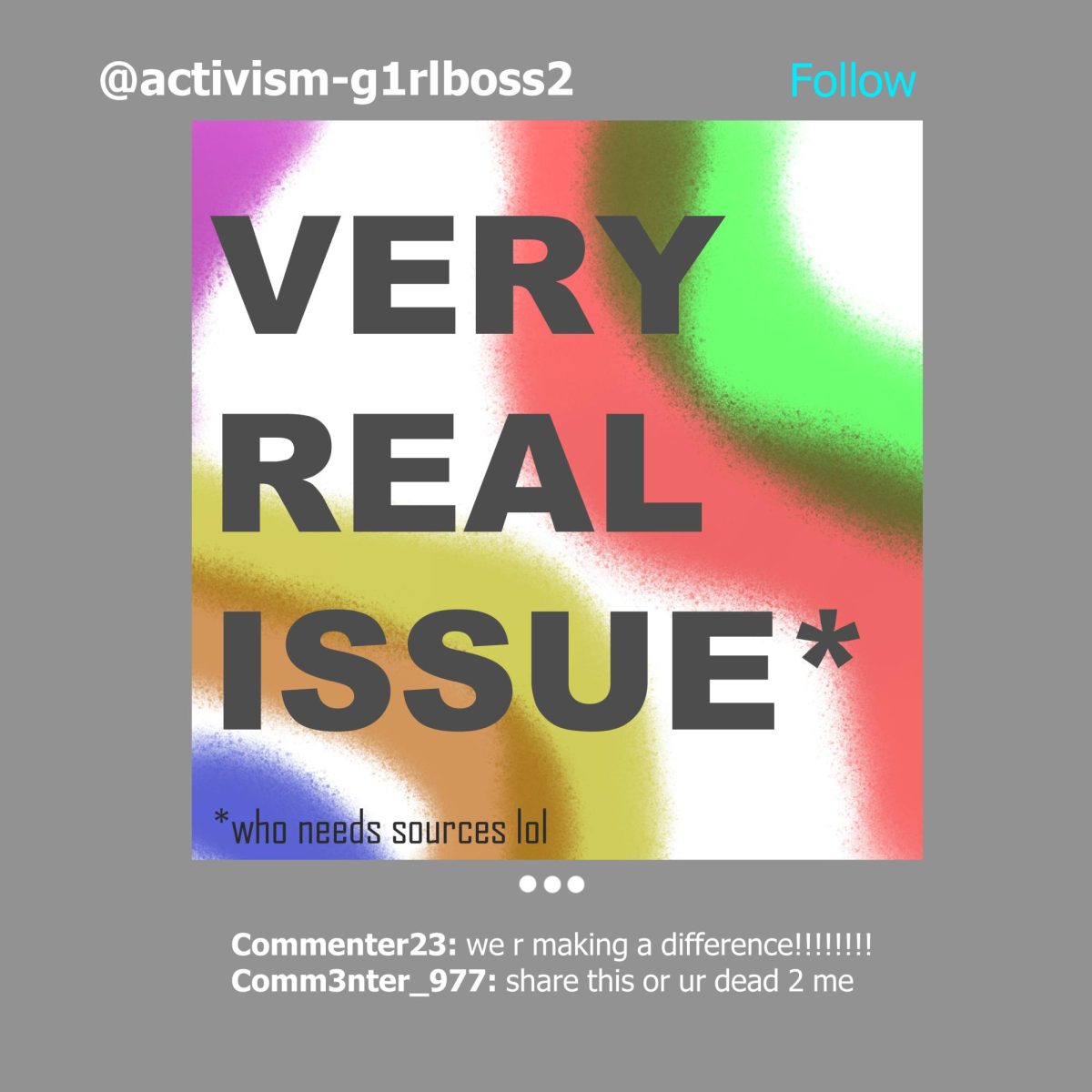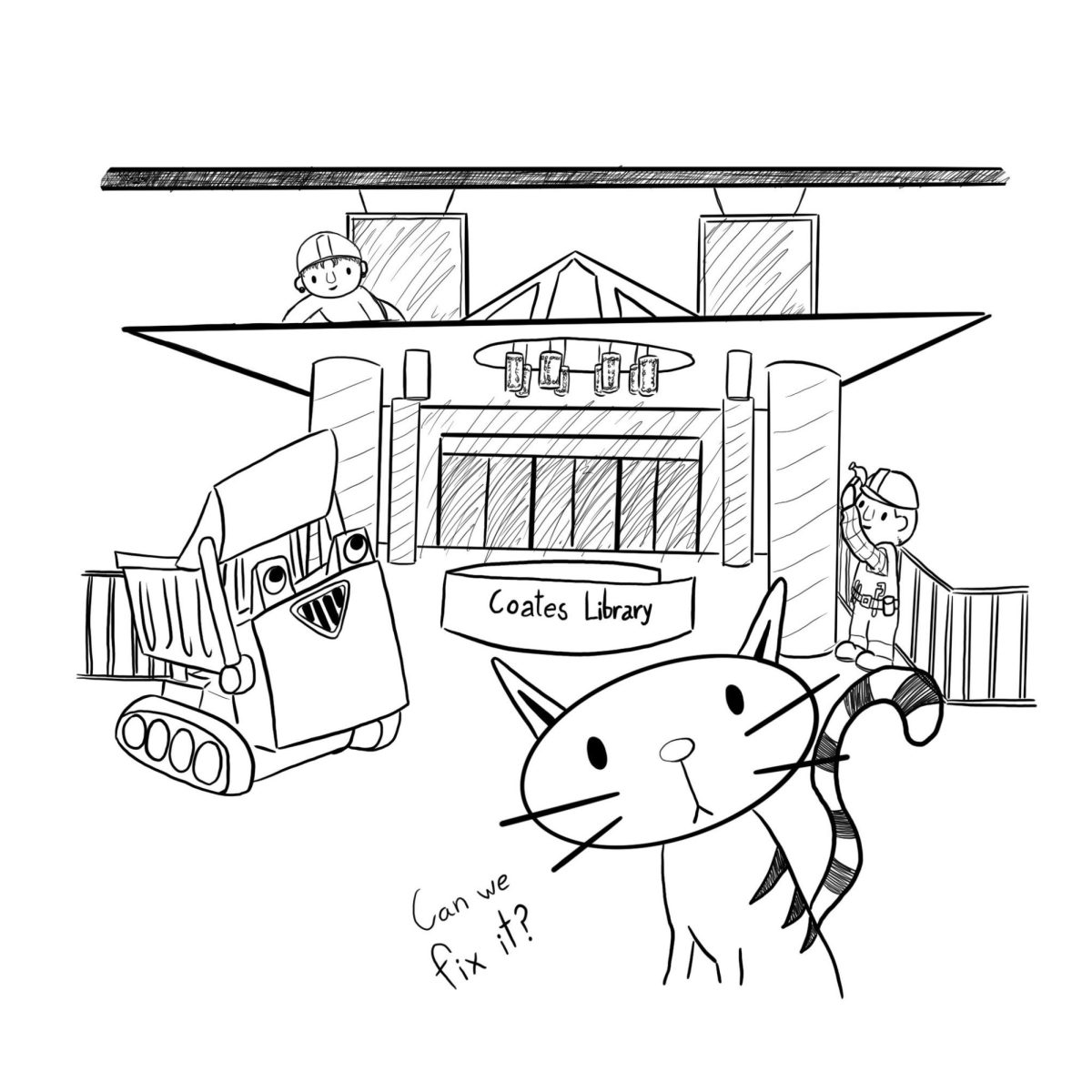During the pandemic, digital “slacktivism” became the ethos of doing the bare minimum. At the same time, #Resistance-led movements became a notable response to the first Trump administration, which also used the internet. In these two cases, activism as a practice was devalued and the aesthetics of “caring” came to the forefront. While the internet is a helpful tool to organize, we must articulate what slacktivism means to bury these past strategies under 2025’s political circumstances and create meaningful resistance.
In 2020, tangible movements occurred alongside mass slacktivism. Armed Conflict Location and Event Data notes that there were over 10,600 protests from May to Aug. 2020 alone. While the pandemic made the internet an important tool to spread important issues, pandemic slacktivism became routine, enabling bubbly infographics as the extent of individual practice. There were collective efforts, such as black squares posted in solidarity with Black Lives Matter following George Floyd’s murder, but these were blatantly performative. While this type of do-nothing activism was centralized online, other movements mobilized under a similar aesthetics-based focus.
After Trump was elected in 2016, a new strategy held amongst some liberals emerged: a decentralized “Resistance liberalism.” Sometimes labeled as “The Resistance” or “#Resistance” as a shorthand, the core of the ideology demanded a “return to normalcy” of American politics, while assuming that Trump represented a newfound shift of conservatism. It presented the pre-Trump norms as nearly unilaterally good, no matter what it entailed.
As protestors proudly displayed signs of their beliefs in their homes, their political movement showed that it was motivated by performative details. The #Resistance was guided by appearing as an opposition rather than pushing for anything substantial. Social media was a prominent tool for their movement, but solely as a means to “dunk” on Trump tweets.
Both 2020 slacktivists and the #Resistance’s goal was to make Trump a small footnote, which happened in the short term, but not directly because of them. Instead, their political capital wasn’t anything more than likes and retweets. Ever since Biden’s presidential win in 2020, both groups took a backseat under the new political circumstances.
At a minimum, 2020 slacktivists and the #Resistance both show a level of awareness to ongoing events. Sören Fillet’s 2023 piece in “Go Vocal” attempts to contextualize slacktivism and tries to show the value of it. He argues that it maintains a positive connection, and says that “slacktivists” are twice as likely to volunteer or donate. At least, there seems to be a degree of consistency with slacktivists’ political beliefs.
This is more clear for the #Resistance, with a meaningful belief in women’s rights. The problem is that dedication to that belief ended when the Democrats became incumbents. The first step for creating action is to be aware of your surroundings, but it does not always equal effective political action.
I use slacktivism as a framework because the current response, while dampened, has a more meaningful coalition. Looking at San Antonio alone, resounding youth-led protests in South San Antonio have responded to the Trump administration’s deportation promises. Last year’s nationwide Palestine protests are another example of young people who are dedicated to issues they care about. Target rolled back its Diversity, Equity and Inclusion programs in line with the goals of the Trump establishment, sparking calls for a boycott. While activism must go beyond the lines of rightful consumption, it still shows people are engaged in multilateral ways.
In 2025, I simply no longer see either type of slacktivism. Perhaps it was due to the political zeitgeist of Trump’s first term or the lockdown. Maybe it was George Floyd’s murder as a galvanizing issue, or the fact that a second Trump administration has pacified many. After all, the main apps used for slacktivism, “X” and Instagram, are now aligned to the Trump administration. Regardless, aesthetics-based slacktivism doesn’t have a place in today’s political landscape, and I’m hopeful that it’s on the way out.
There’s an online joke that in order to create action, people must first vaguely “create community.” Trinity students have the advantage of student organizations, but it’s much harder to create a broad-based coalition to demand change. 2020 was five years ago, but a generation’s formative political moments have come within that time.
Movements must come from a place of creating meaningful, lasting change that goes beyond the aesthetics of resistance. Though it’s much easier to repost an Instagram graphic than to do something tangible, now is not the time to take the easy way out.





